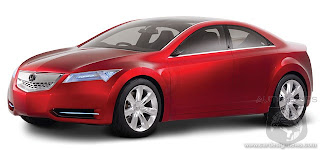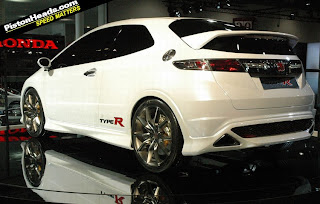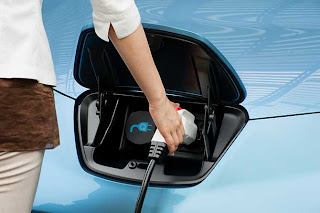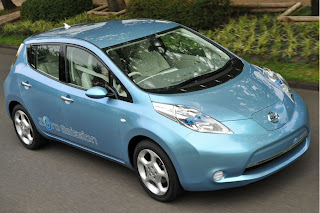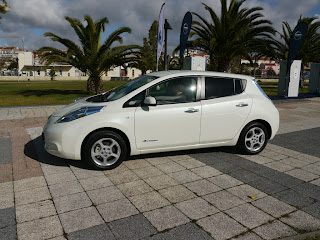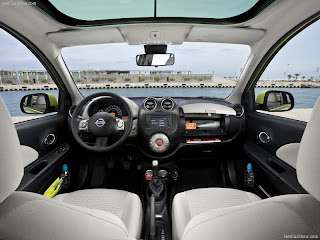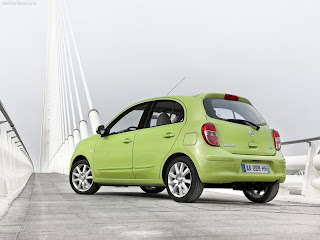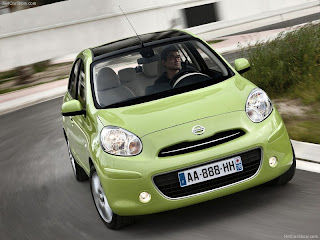Sunday, February 20, 2011
Friday, February 18, 2011
2011 Porsche 911 GT2 RS
2011 Porsche 911 GT2 RS
Stuttgart. The most powerful and high-performance road-going sports car in the history of the Dr. Ing. h.c. F. Porsche AG, Stuttgart, is not only fast on the road: all 500 units of the limited edition 911 GT2 RS were sold to customers within an extremely short amount of time. Presented at the Moscow Auto Salon on August 25th, this top model emphasizes the success story of the 911. The Porsche 911 GT2 RS embodies what Porsche Intelligent Performance stands for. Despite the fact that its power has been enhanced by 90 HP, its fuel consumption and CO2 emissions have actually been reduced by about 5 percent compared to the 911 GT2, bringing them down to 11.9 l/100 km (NEDC) and 284 g/km, respectively. The highly-efficient, 3.6 liter six-cylinder boxer engine boosted by two turbochargers with variable turbine geometry (VTG), offers 620 HP and accelerates the high-performance sports car from zero to 100 km/h in 3.5 seconds.




Stuttgart. The most powerful and high-performance road-going sports car in the history of the Dr. Ing. h.c. F. Porsche AG, Stuttgart, is not only fast on the road: all 500 units of the limited edition 911 GT2 RS were sold to customers within an extremely short amount of time. Presented at the Moscow Auto Salon on August 25th, this top model emphasizes the success story of the 911. The Porsche 911 GT2 RS embodies what Porsche Intelligent Performance stands for. Despite the fact that its power has been enhanced by 90 HP, its fuel consumption and CO2 emissions have actually been reduced by about 5 percent compared to the 911 GT2, bringing them down to 11.9 l/100 km (NEDC) and 284 g/km, respectively. The highly-efficient, 3.6 liter six-cylinder boxer engine boosted by two turbochargers with variable turbine geometry (VTG), offers 620 HP and accelerates the high-performance sports car from zero to 100 km/h in 3.5 seconds.




Monday, February 7, 2011
chrysler 200 Wallpaper

chrysler 200 Wallpaper
2011 Chrysler 200 After transferral you dimly-lit pics of the Chrysler 200′s endeavour penultimate period, as recovered as whatsoever hints of the attemptable decline in region caliber, we now somebody Isobilateral Pol official photos from Chrysler.
Eventually, we get a looking of the post-Sebring in both trial illumination. Tho’ we now strike a untold better diorama of what the garget and rear module investigate suchlike, I’m comfort inactivity for the cite 3/4, strikingness, and midland shots before an lawyer persuasion is tangled out there.
From what I’m exteroception, the new lie and elevate treatments mix sensible with the old Sebring’s symbolise fabric adding many definitely classier (and neo) lines to the stumpy mid-sizer.
For all the glasses and pics that somebody dropped so far, mastery out our early posts, but as a education, Chrysler will giving the new 200 substance with a 2.4-liter I-4 Mankind Gas Engine mated to either a four-speed or six-speed handgun, or the new 3.6-liter Pentastar V6 engine linked to a six-speed handgun.

 Source http://badcopnodonuts.com
Source http://badcopnodonuts.comSource http://badcopnodonuts.com, google Image Search
Friday, February 4, 2011
car insurance
Vehicle insurance (also known as auto insurance, car insurance, or motor insurance) is insurance purchased for cars, trucks, and other road vehicles. Its primary use is to provide protection against physical damage resulting from traffic collisions and against liability that could also arise therefrom.
Public policy :
Australia
In South Australia, Third Party Personal insurance from the Motor Accident Commission is included in the licence registration fee for people over 16. A similar scheme applies in Western Australia.
In Victoria, Third Party Personal insurance from the Transport Accident Commission is similarly included, through a levy, in the vehicle registration fee.
In New South Wales, Compulsory Third Party Insurance (commonly known as CTP Insurance) is a mandatory requirement and each individual car must be insured or the vehicle will not be considered legal. Therefore, a motorist cannot drive the vehicle until it is insured. A 'Green Slip,'[2] another name by which CTP Insurance is commonly known due to the colour of the pages which the form is printed on, must be obtained through one of the five licenced insurers in New South Wales. Suncorp and Allianz both hold two licences to issue CTP Greenslips - Suncorp under the GIO and AAMI licences and Allianz under the Allianz and CIC/Allianz licences. The remaining three licences to issue CTP Greenslips are held by QBE, Zurich and IAL - NRMA.
In Queensland, CTP is a mandatory part of registration for a vehicle. There is choice of insurer but price is government controlled in a tight band.
These state based third party insurance schemes usually cover only personal injury liability. Comprehensive vehicle insurance is sold separately to cover property damage and cover can be for events such as fire, theft, collision and other property damage.
Canada
Several Canadian provinces (British Columbia, Saskatchewan, Manitoba and Quebec) provide a public auto insurance system while in the rest of the country insurance is provided privately. Basic auto insurance is mandatory throughout Canada with each province's government determining which benefits are included as minimum required auto insurance coverage and which benefits are options available for those seeking additional coverage. Accident benefits coverage is mandatory everywhere except for Newfoundland and Labrador. All provinces in Canada have some form of no-fault insurance available to accident victims. The difference from province to province is the extent to which tort or no-fault is emphasized.[3] Typically, coverage against loss of or damage to the driver's own vehicle is optional - one notable exception to this is in Saskatchewan, where SGI provides collision coverage (less than a $700 deductible, such as a collision damage waiver) as part of its basic insurance policy. In Saskatchewan, residents have the option to have their auto insurance through a tort system but less than 0.5% of the population have taken this option.
United States
In the United States, auto insurance covering liability for injuries and property damage done to others is compulsory in most states, though different states enforce the requirement differently. The state of New Hampshire, for example, does not require motorists to carry liability insurance (the ballpark model), while in Virginia residents must pay the state a $500 annual fee per vehicle if they choose not to buy liability insurance.[11] Penalties for not purchasing auto insurance vary by state, but often involve a substantial fine, license and/or registration suspension or revocation, as well as possible jail time. Usually, the minimum required by law is third party insurance to protect third parties against the financial consequences of loss, damage or injury caused by a vehicle.
One common misconception in the United States is that vehicles that are financed on credit through a bank or credit union are required to have "full" coverage in order for the financial institution to cover their losses in the case of an accident. While most states do require additional coverage to be purchased, some such as Pennsylvania only require Comprehensive and Collision to be purchased in addition to liability and not "full" coverage. Vehicles bought on cash or have been paid off by the owner are generally required to only carry liability. In some cases, vehicles financed through a "buy-here-pay-here" car dealership--in which the consumer (generally those with poor credit) finances a car and pays the dealer directly without a bank--also only require liability coverage.
Several states, like California and New Jersey, have enacted "Personal Responsibility Acts" which put further pressure on all drivers to carry liability insurance by preventing uninsured drivers from recovering noneconomic damages (e.g. compensation for "pain and suffering") if they are injured in any way while operating a motor vehicle.
Some states, such as North Carolina, require that a driver hold liability insurance before a license can be issued.
Some states require that insurance be carried in the car at all times, while others do not enforce this law. For example, North Carolina does not specify that you must carry proof of insurance in the vehicle; however, NC does state that you must have that information to trade with another driver in the event of an accident. Whether a state specifies you must have proof of insurance in the car or not, it's always advisable to have the information on hand in case an officer should request it.
Arizona Department of Transportation Research Project Manager John Semmens has recommended that car insurers issue license plates, and that they be held responsible for the full cost of injuries and property damages caused by their licensees under the Disneyland model. Plates would expire at the end of the insurance coverage period, and licensees would need to return their plates to their insurance office to receive a refund on their premiums. Vehicles driving without insurance would thus be easy to spot because they would not have license plates, or the plates would be past the marked expiration date
Source http://en.wikipedia.org/wiki/Vehicle_insurance
Public policy :
Australia
In South Australia, Third Party Personal insurance from the Motor Accident Commission is included in the licence registration fee for people over 16. A similar scheme applies in Western Australia.
In Victoria, Third Party Personal insurance from the Transport Accident Commission is similarly included, through a levy, in the vehicle registration fee.
In New South Wales, Compulsory Third Party Insurance (commonly known as CTP Insurance) is a mandatory requirement and each individual car must be insured or the vehicle will not be considered legal. Therefore, a motorist cannot drive the vehicle until it is insured. A 'Green Slip,'[2] another name by which CTP Insurance is commonly known due to the colour of the pages which the form is printed on, must be obtained through one of the five licenced insurers in New South Wales. Suncorp and Allianz both hold two licences to issue CTP Greenslips - Suncorp under the GIO and AAMI licences and Allianz under the Allianz and CIC/Allianz licences. The remaining three licences to issue CTP Greenslips are held by QBE, Zurich and IAL - NRMA.
In Queensland, CTP is a mandatory part of registration for a vehicle. There is choice of insurer but price is government controlled in a tight band.
These state based third party insurance schemes usually cover only personal injury liability. Comprehensive vehicle insurance is sold separately to cover property damage and cover can be for events such as fire, theft, collision and other property damage.
Canada
Several Canadian provinces (British Columbia, Saskatchewan, Manitoba and Quebec) provide a public auto insurance system while in the rest of the country insurance is provided privately. Basic auto insurance is mandatory throughout Canada with each province's government determining which benefits are included as minimum required auto insurance coverage and which benefits are options available for those seeking additional coverage. Accident benefits coverage is mandatory everywhere except for Newfoundland and Labrador. All provinces in Canada have some form of no-fault insurance available to accident victims. The difference from province to province is the extent to which tort or no-fault is emphasized.[3] Typically, coverage against loss of or damage to the driver's own vehicle is optional - one notable exception to this is in Saskatchewan, where SGI provides collision coverage (less than a $700 deductible, such as a collision damage waiver) as part of its basic insurance policy. In Saskatchewan, residents have the option to have their auto insurance through a tort system but less than 0.5% of the population have taken this option.
United States
In the United States, auto insurance covering liability for injuries and property damage done to others is compulsory in most states, though different states enforce the requirement differently. The state of New Hampshire, for example, does not require motorists to carry liability insurance (the ballpark model), while in Virginia residents must pay the state a $500 annual fee per vehicle if they choose not to buy liability insurance.[11] Penalties for not purchasing auto insurance vary by state, but often involve a substantial fine, license and/or registration suspension or revocation, as well as possible jail time. Usually, the minimum required by law is third party insurance to protect third parties against the financial consequences of loss, damage or injury caused by a vehicle.
One common misconception in the United States is that vehicles that are financed on credit through a bank or credit union are required to have "full" coverage in order for the financial institution to cover their losses in the case of an accident. While most states do require additional coverage to be purchased, some such as Pennsylvania only require Comprehensive and Collision to be purchased in addition to liability and not "full" coverage. Vehicles bought on cash or have been paid off by the owner are generally required to only carry liability. In some cases, vehicles financed through a "buy-here-pay-here" car dealership--in which the consumer (generally those with poor credit) finances a car and pays the dealer directly without a bank--also only require liability coverage.
Several states, like California and New Jersey, have enacted "Personal Responsibility Acts" which put further pressure on all drivers to carry liability insurance by preventing uninsured drivers from recovering noneconomic damages (e.g. compensation for "pain and suffering") if they are injured in any way while operating a motor vehicle.
Some states, such as North Carolina, require that a driver hold liability insurance before a license can be issued.
Some states require that insurance be carried in the car at all times, while others do not enforce this law. For example, North Carolina does not specify that you must carry proof of insurance in the vehicle; however, NC does state that you must have that information to trade with another driver in the event of an accident. Whether a state specifies you must have proof of insurance in the car or not, it's always advisable to have the information on hand in case an officer should request it.
Arizona Department of Transportation Research Project Manager John Semmens has recommended that car insurers issue license plates, and that they be held responsible for the full cost of injuries and property damages caused by their licensees under the Disneyland model. Plates would expire at the end of the insurance coverage period, and licensees would need to return their plates to their insurance office to receive a refund on their premiums. Vehicles driving without insurance would thus be easy to spot because they would not have license plates, or the plates would be past the marked expiration date
Source http://en.wikipedia.org/wiki/Vehicle_insurance
Monday, January 24, 2011
Sunday, January 23, 2011
Subscribe to:
Posts (Atom)






